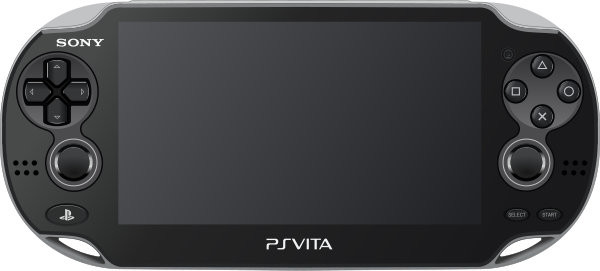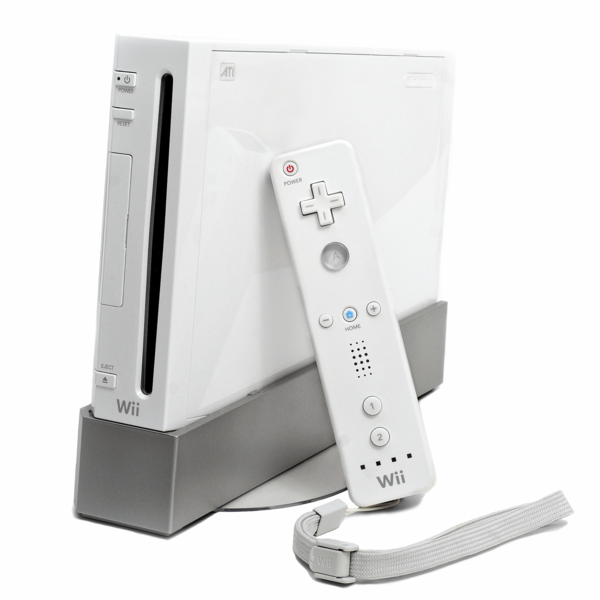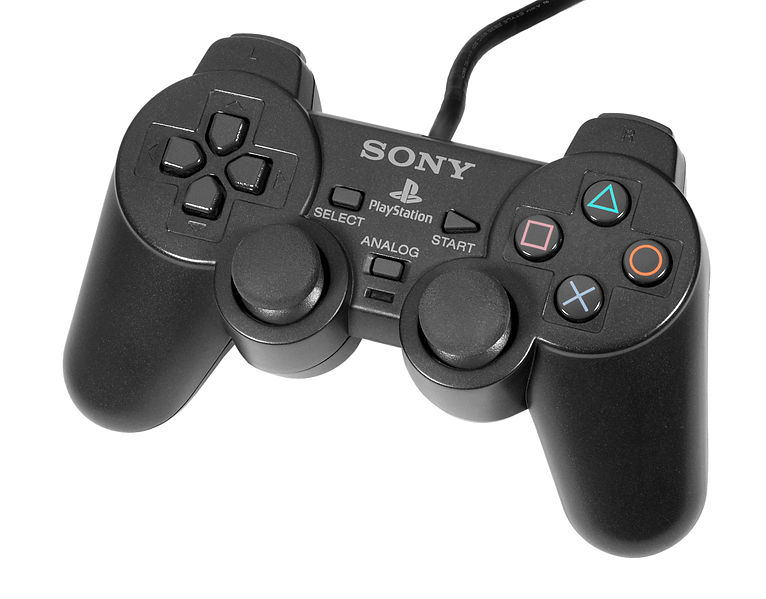Sometimes I'd like to not be such a realist.
The PlayStation Vita is a gorgeous piece of technology. Seriously pretty, in a way that Nintendo's handhelds have never managed. It looks sleek, shiny, elegant. It's also got the potential to be a colossal failure. And I'm worried about that.
I don't own a Vita. As a mid-twenties gamer with an income, I am the target audience. Even more so, because I travel extensively on buses, trains, and planes, and so would have the inclination, opportunity, and time to use it. I don't, it has to be said, have a PS3, so can't use any connectivity there, I don't have a back catalogue of PSP games to download, and I don't have a smartphone, so couldn't tether the wireless Vita to my phone's 3G, but still. I don't have a smartphone. Or a 3DS. I want to play proper, grown-up games that have more sophistication than those on a smartphone, that can be played on the move, and that aren't Nintendo merely bringing the same increasingly threadbare toys out of the box. Why didn't I jump at it?
Sony's made a number of errors with the Vita. Some have been covered extensively elsewhere, but there's a few other concerns I have that I'm not sure anyone's considered fully.
To cover the obvious, the price is a massive issue. Not just for the handheld itself (£200-230 depending on where you look), which is being seriously undercut by Nintendo's 3DS (£130), but for the proprietary memory cards that Sony is insisting people use. Whether they'll defeat Vita piracy is moot, but $99 for the 32GB card (not available in Europe) and £40 for a 16GB card, when a standard 16GB SD card can be bought for £15, is ridiculous. Furthermore, as Eurogamer have shown, Vita cards are, if anything, slower than standard SD cards at transferring data.
Game pricing too is a serious drawback - while selling downloadable games for £5 on the PS Store is viable, an RRP of £44.99 for many of the highest-profile Vita games is not. Even Nintendo won't charge more than £30 for a 3DS game, and that's stretching it for a handheld when iPhone games cost all of £9.99 at the very highest price point. Most are 99p.
However, costs can come down. Nintendo tried selling the 3DS at £229, screwed up its marketing campaign (failing to realise that 3D was not a selling point that worked on people) and was forced into a humiliating price cut after a mere 6 months. The Vita could see the same, although it does cost more to produce than Nintendo's handheld. Cost may, however, only be a temporary problem.
The battery life being only 3 1/2 hours is another serious problem for a handheld, despite the 3DS having a similar longevity. A long-haul flight can't be spent playing games on it. It's an issue, although improved batteries may be developed for later models.
Far more damaging are the two factors that I believe will hold the Vita back long term, without a significant hardware revision.
Firstly, it doesn't have enough buttons.
For a console with a d-pad, two analogue sticks, two shoulder buttons, the four playstation buttons, tilt-recognition, and touchscreens at the front and the rear, the joke is that Vita contains every control method known to man. Except, it doesn't have enough.
Secondly, it isn't powerful enough.
The Vita is the most powerful gaming handheld ever created. It can show visuals that have never been seen on a device on the move before. Except, they aren't quite good enough.
To backtrack. The current console generation of the PS3 and the Xbox 360 has been going on for a long time. Since 2005, in fact. Over six years in the same generation, with a likely one or two more years to come, has enabled a vast back catalogue of games to be built up. Arguably more than at any other time for a single non-PC generation of consoles. The Vita's success, I believe, will rest with whether it can tap into that.
The Vita is niche. It won't sell as many as the 3DS, not just because Nintendo can afford a price cut deeper than Sony, but because the majority of handheld gamers are kids. Parents (who may be gamers themselves) will happily buy them for their children, who may not have their own TV or computer yet. Nintendo is cute in a way that Sony just isn't. Adults have their widescreen TVs, their surround-sound, and see gaming as a chance to relax at home. Most will see no reason to play games anywhere other than the couch. Which means that the Vita, which is not a console for kids but emphatically one for the teen or adult gamer, is looking at selling only to people who are gamers, who are loaded, and who travel enough to justify the purchase. Or else those gamers who want a console to play while the girlfriend/wife watches The X-Factor in the same room. This is exactly the same scenario that Sony faced with the PSP.
Because it's niche, why would developers bother to make games for it?
The most serious problem that the Wii faced throughout its life was that the only developer willing to make the type of games on it that would appeal to so-called 'core' gamers was Nintendo, the platform manufacturer. This was because, with an odd control scheme (that lacked a similar number of buttons to an Xbox or PlayStation 3 controller) and significantly weaker processor and graphics capability, it took a lot of effort for developers making a game for PC/Xbox 360/PS3 (all versions of which could be developed simultaneously) to bring the same game out on the Wii. It was, in fact, impossible.
The Wii couldn't graphically cope with games that were for the other three big formats, and so editions of mult-platform games that did make it onto the Wii were redesigned from the ground-up to cope. Furthermore, the need to use the waggle of the motion controller further necessitated a total redesign. Which meant that Wii games had to be made for the Wii alone. And developers knew that when making a 'core' game, there were vastly more core gamers with a PC, Xbox 360, or PS3, than there could ever be found on the Wii alone. So they didn't bother. The economics didn't make sense.
Look at the Xbox 360 and PS3 controllers. It's a simple point, but they have exactly the same number of buttons. A d-pad, four 'action' buttons, four 'shoulder' buttons at the back, start and select buttons, and two analogue sticks that give an extra two buttons when pressed in. That's a lot of buttons, and while this seems a really basic point to make, developers love that these two controllers are vitually identical. There is no extra effort having to adapt a game to each controller. None at all. When the systems are technically vitually identical in terms of what they can graphically cope with, cross-platform gaming has become the reality.
But not to the Wii. That's not up to it. And doesn't have enough buttons.
Here's where the Vita comes in.
The Vita may have two touch screens, but it lacks four of the buttons on a PS3 controller. It is missing two of the four shoulder buttons, and the analogue sticks can't be pushed in - those two buttons don't exist either. If a current generation game is to be ported to the Vita, therefore, that's four functions that the game will either have to lose, or have to have mapped to the touchscreens. If the Vita is to be helped by quick ports of successful current-generation games, this is a problem.
Secondly, the graphics. As Eurogamer's digital foundry demonstrated, the best-looking Vita launch titles are running at lower than the Vita's highest resolution. This wouldn't be too much of an issue on its own, but the nature of Vita's Uncharted: Golden Abyss, that lacks the large, graphically-intensive set-pieces of the PS3 games, suggests that the Vita isn't quite up to the same graphical standard as the PS3. The static backgrounds on display encourage this interpretation. If this is true, and the Vita can't cope with a full current generation title without effort being made to scale back graphics, this would mean that - again - current generation titles can't be ported to the Vita without significant investment during development to make the existing game graphically worse. This would most likely be time-consuming, expensive, and in some cases, impossible.
Another issue is one that any PC gamer will have encountered. Some of the current generation titles are massive. Frequently over 10GB, they take up a lot of hard drive space. For a PC, this is fine, but for the all-games-available-as-digital-download Vita, of which the largest European memory card is 16GB, it starts to cause serious problems. GTA 4 on PC, for example, is 16GB all on its own. Once again, current generation titles will be a lot harder to port than it may seem.
Now, there are many current generation titles that don't stretch the hardware of the PS3, or use all the buttons on the controller. And we may very well see ports of these titles, as indeed we have with Virtua Tennis 4. But Skyrim? F1 2011 on Vita was a port of the PC/Xbox 360/PS3 game, but had to cut the lifestyle segment from the game, reduce the graphical capability, and be ported by a different developer to the original game. It isn't the same game. And it isn't as good as the original. My worry is that this will become the norm, if it happens at all.
 |
| A port. |
As a niche product, as the PSP and Wii saw, it is hard to get people to make games for you. Especially when, unlike the Wii, there isn't a large number of people owning the console. Will people bother developing great games for the Vita? Surely, only if it makes economic sense. There needs to be enough people with a Vita to make this worthwhile. Given the library of titles in this generation, the ideal for the Vita would be to allow these games, from GTA 4 to Batman: Arkham City, to Assassins Creed: Brotherhood to Call of Duty: Modern Warfare 2 to be ported to it. Shared saves with the PS3/PC would be even better (although unlikely for PC). This would be a sure-fire way of attracting customers, especially if such old games were sold at a discount. But I'm not sure the Vita is technologically up to them, and even then, it forces the developers to cut four control features, or to map them to the touchscreen.
Failing ports like this, Vita needs to embrace mobile gaming as it is now. Allowing iPhone/Android games onto the SEN Store would be a fantastic move, giving gamers with a Vita the chance to enjoy thousands of cheap games they may not have had access to before. The Vita's touchscreen is amazing, and here is the perfect chance to show it off with cheaply-accessible, pre-existing content.
Except Sony has shown no sign of wanting to do that. Their walled garden approach to development means that only Sony-specific titles will appear on Vita. It seems to be another serious own goal.
So, without the prospect of easy ports of the best AAA games of this generation, without the vast catalogue of smartphone games to bolster the causal end of the market, and without (yet?) the install-base to make developing games for the Vita alone a smart economic move for developers, combined with an eye-watering price tag for the console, games, and peripherals, the immediate future for the Vita does not look great.
And it's a shame. It is the best handheld console ever created. It would be fantastic for gaming as a whole, and for the future of handheld gaming in particular, if it was a roaring success. But, sadly, Sony's propensity to shoot themselves in the foot is very much in evidence here. And it's a case of nearly, but not quite.
Having said all this, part of me still wants one. But I think that I want what it could be, what it represents. And I'm not sure it'll ever make it there.










No comments:
Post a Comment